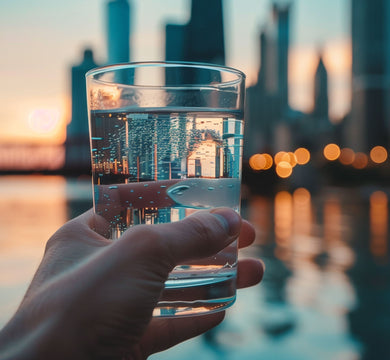Testing the waters: Lead exceeds acceptable levels in water at many Seattle schools
The Seattle school district tests the drinking water at each campus at least once every three years. Through early 2018, the results of those tests showed 53 percent of schools in South Seattle registered lead readings above what the district considers an acceptable level of exposure.
Water sources at more than half the city’s South End schools, which serve many students of color and children living in poverty, exceeded the Seattle Public Schools’ limit for lead, according to a recent analysis of the district’s data.
The Seattle school district tests the water in drinking fountains and classroom sinks at each campus at least once every three years. Through early 2018, the results of those tests showed 53 percent of schools in South Seattle registered lead readings above what the district considers an acceptable level of exposure.
And the environmental risk isn’t limited to children in less-privileged neighborhoods: Elevated levels of lead appeared in tests at 36 percent of schools in whiter and more affluent North Seattle schools.
District officials say the high lead readings don’t pose a danger to students, because the failed fixtures are classroom sinks, not drinking fountains — which assumes kids drink exclusively from fountains. But as of this summer, district data showed elevated lead levels in some drinking fountains in at least seven schools and Memorial Stadium at Seattle Center, home to high-school and professional games.
The highest level of lead was discovered at a drinking fountain in Green Lake Elementary. There, a combination fixture — with both a fountain and a sink — registered levels of lead in 2016 nearly six times the district’s self-imposed limit of 10 parts per billion and four times above a federal standard of 15 parts per billion.
The district posted a sign near the fountain, warning students not to drink from it. A similar sign was posted near a fountain with a lead reading of 17 parts per billion in a locker room at Memorial Stadium. The district said, though, that the fountain is in a space set aside for the Reign FC, a professional soccer team.
Since The Seattle Times began asking questions about failed fixtures, the district has updated the results for certain schools, including Green Lake, on its website that shows water-quality test results. The page for that school now lists the fountain as disabled — it’s unclear when, exactly, the district shut the flow. As of Thursday, the district was still modifying data. It also recently added language to its website saying it does not consider sinks to be drinking-water sources.
“Seattle likes to think it has some of the best drinking water in the nation, but not for its children, and especially not on the South Side,” said Rachel Blakeslee, an environmental researcher who, as part of her master’s thesis at the University of Washington, analyzed years’ worth of water-quality test results at every school and calculated the overall numbers. “They’ve had this (testing) program around for more than a decade and still have lead in their schools.”
The Seattle school district, once considered a pioneer for its water-quality program, publicly boasts that 99 percent of the approximately 4,000 water fixtures across its campuses test safe for lead. While that may be true, it’s only an average — one that masks the wide disparities between individual schools.
At Broadview-Thomson K-8, a school that straddles the Broadview and Bitter Lake neighborhoods in North Seattle, a full third of water sources tested above the district’s threshold. Sixty percent of Broadview-Thomson students come from low-income households. Across Interstate 5 at Cedar Park Elementary, where 1 in 4 students live in poverty, none of the water sources failed the district standard.
Article: https://www.seattletimes.com/education-lab/lead-persists-in-the-water-at-many-seattle-schools-does-chicago-have-a-solution/


